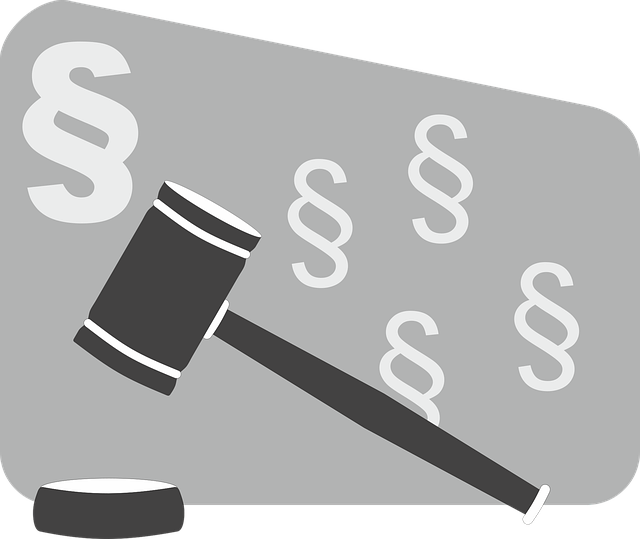Navigating Financial Services Regulation in Court involves understanding consumer protection laws to shield individuals from unfair banking, lending, and insurance practices. Suits address violations like misrepresentations, aiming to compensate consumers and hold providers accountable for harm. Through complaints, discovery, hearings, and verdicts, this process promotes transparency, fairness, and market integrity while protecting consumer rights. Attorneys strategize with document preparation, legal research, and regulatory understanding to navigate these complex cases.
Navigating Financial Services Regulation in Court involves understanding consumer protection suits and their intricate details. This article provides a comprehensive guide, delving into key aspects such as consumer protection laws, common grounds for legal action, court processes, and winning strategies. By exploring these elements, individuals and businesses can better prepare for and navigate the complexities of financial services regulation, ensuring fair practices and consumer satisfaction.
- Understanding Consumer Protection Laws
- Common Grounds for Legal Action
- The Court Process: Steps and Expectations
- Effective Strategies for Success in Suits
Understanding Consumer Protection Laws

Navigating Financial Services Regulation in Court requires a deep understanding of consumer protection laws. These regulations are designed to safeguard individuals from unfair, deceptive, or fraudulent practices within the financial sector. Consumer protection suits aim to ensure that businesses operating in banking, lending, insurance, and other financial services adhere to ethical standards and provide transparent services. By holding these institutions accountable, consumers can achieve justice and protection against potential harm.
In such legal battles, understanding the intricacies of relevant laws is crucial for both plaintiffs and defendants. Effective navigation involves recognizing and addressing violations like misrepresentations, hidden fees, or discriminatory practices. A successful outcome often hinges on demonstrating that financial service providers have failed to uphold their responsibilities, leading to significant impacts on consumers’ financial well-being. This process not only seeks compensation but also promotes accountability within the industry, fostering a more reliable and transparent environment for all participants, including philanthropic and political communities, ultimately achieving extraordinary results in protecting consumer rights.
Common Grounds for Legal Action

Consumer protection suits are brought for various reasons, but certain common grounds for legal action often arise when individuals or groups believe their rights have been violated by businesses or financial institutions. These cases typically fall under the broader category of navigating financial services regulation in court. Common issues include unfair business practices, false advertising, and the misrepresentation of products or services.
When consumers suspect fraudulent activities or violations of consumer protection laws, they may take action at any stage of the investigative and enforcement process. This can range from reporting suspected white-collar and economic crimes to participating in jury trials that help establish precedents for future cases. The goal is to ensure transparency, accountability, and fairness in financial transactions, protecting consumers’ interests and maintaining the integrity of the market.
The Court Process: Steps and Expectations

Navigating Financial Services Regulation in Court involves a complex process that requires careful preparation and understanding. The initial step is typically filing a complaint with the appropriate court, outlining the alleged violations and seeking redress. This phase demands meticulous documentation of all transactions, contracts, and communications relevant to the case. Once filed, the plaintiff can expect a response from the defendant, who may either agree to settle or file an answer, denying the allegations.
In high-stakes cases involving general criminal defense, expectations shift towards a thorough legal battle. The court process advances through discovery, where both parties exchange evidence and testimony, followed by pre-trial hearings to set the stage for trial. During this time, businesses involved must cooperate with legal teams while strategically presenting their respective business cases. Ultimately, a judge or jury will deliberate the facts, applying relevant financial services regulations to render a verdict aimed at protecting consumers’ interests.
Effective Strategies for Success in Suits

Navigating Financial Services Regulation in Court presents unique challenges due to the complex nature of financial transactions and the high stakes involved. Successful strategies for consumer protection suits often hinge on meticulous document preparation, thorough legal research, and a deep understanding of regulatory frameworks. Attorneys must demonstrate that businesses have complied with relevant laws and regulations, such as those governing lending practices, investment advice, and data privacy. This involves sifting through volumes of policies, procedures, and communication records to identify any deviations or misrepresentations.
In high-stakes cases involving white collar defense, a strategic approach is paramount. Lawyers should focus on building a robust defense that challenges the plaintiff’s evidence and exposes any inconsistencies or vulnerabilities in their claims. Engaging with philanthropic and political communities can also play a role, as public sentiment and regulatory influences often shape the outcome of such suits. By combining legal acumen with strategic communication, effective advocacy ensures that businesses face fair scrutiny while protecting their interests in the court of law.
Navigating consumer protection suits involves a deep understanding of legal grounds, court procedures, and successful strategies. By familiarizing themselves with these aspects, consumers and legal professionals can effectively protect rights under financial services regulation. Remember that each case is unique, but armed with the right knowledge, one can anticipate and navigate the court process, ultimately achieving justice and ensuring a safer financial landscape for all.






